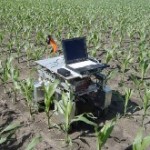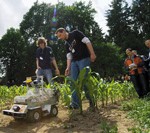 Medical robotics and robotic surgery appear to be the future of medical operations. Although the cost of a surgical robot is approximately $ 1.7 million, it is a very large extent. The medical world sees this technology as a remarkable and revolutionary step towards less invasive surgery. Through the use of robotics more complex operations has become very easy.
Medical robotics and robotic surgery appear to be the future of medical operations. Although the cost of a surgical robot is approximately $ 1.7 million, it is a very large extent. The medical world sees this technology as a remarkable and revolutionary step towards less invasive surgery. Through the use of robotics more complex operations has become very easy.
Performing surgery on body stomachs, livers, gallbladders and colon is now very easy. The surgeons swear by the performance of robotic surgery as it promises less pain, faster recovery, reduced medication, and virtually scar free cut. If present, there is three types of robotic operations are ordered. There are robots operations using monitoring systems to control telecommunications surgical system and shared system control.
The supervisory controlled system, commonly known as computer-assisted surgery, is the most automated system among the three, as mentioned here. For this type of robotic surgery, the surgeon has to carry a significant prep work which includes, entering a lot of data on missile systems, planning for the whole course of action, taking X-rays, test robots motions, placing the robotic instrument in the proper start situation and review the robotic action to make clear everything goes as per system.
The most famous example of this is the robotic system. This was developed by Integrated Surgical Systems. This system has been widely used in orthopedic surgery to give good results.
Robotic surgery is done with the use of telecommunications surgical robotic system is the next category of today’s famous robotic surgery. The current robotic surge current robotic surgery. The use of telecommunications surgical systems, improve the results achieved after the operation, by offering 3-D images of the many hard to reach places, such as the brain.
This technique has also been effective in improving wrist dexterity and superior control of small instruments. Surgeons can now make accurate and controlled movements, really fast; with the help of a robotic arm that has a wide border on the motion.
More and more surgeons decide to perform their operations with the use of telecommunications surgical robotics. Telesugical Robotics had won the favor of most of the processes performed by the robot. These robots are very good and provide the kind of solidity that really tough for human hands to master. The complicated procedures for heart valve repair and artery repairs are now completed, without substantial breaks for recovery.
The shared control system is the last type of surgery performed by the medical robotics. In this type of robotic surgery, the surgeon makes the most of the work, but the robot is used to get help when needed. In a few cases, the robot guard surgeon. It thus provides help and stability during the procedure. Earlier start operation, the surgeon programs the robots to identify the close, secure and restricted areas inside the body.
Close and secure regions are the main concentration of this operation. Covered regions adjacent to lightly damaged soft tissue. In case the surgeon approaches the forbidden area, alarm robot surgeon, and in some cases, when the dangerous zone is reached, the system locks up to keep away from further damage. Shared control may work great for heart surgery. It is in these types of operations, in which the surgeon makes the measure, but stabilizes the robot hand.










